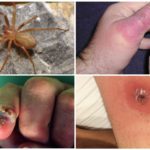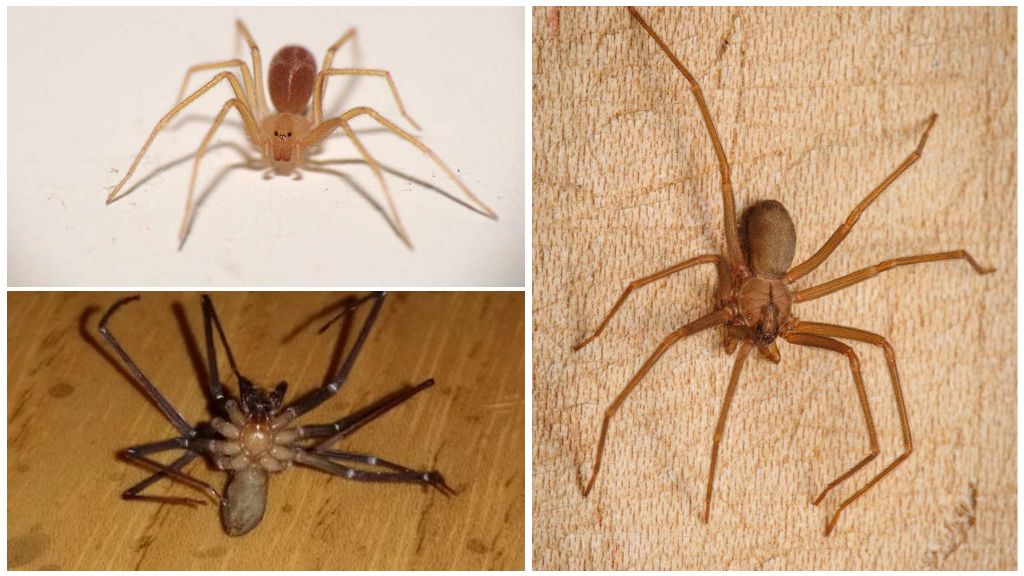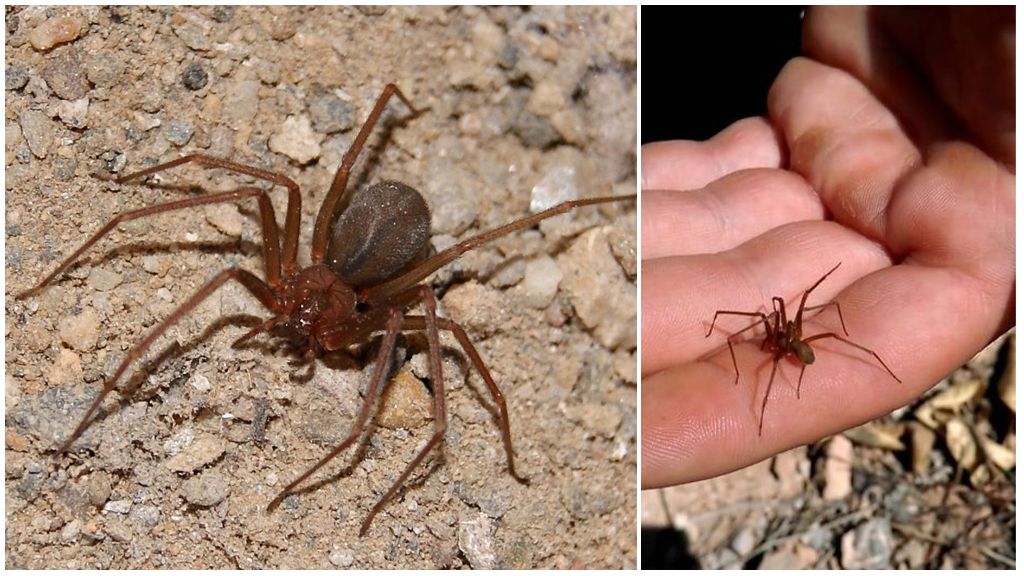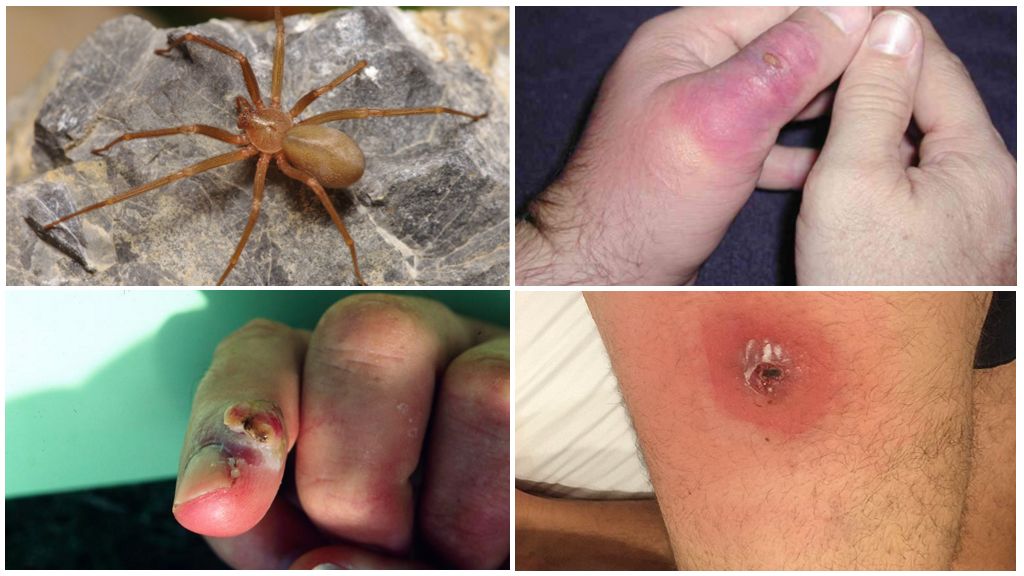Brown hermit spider
Content
- Brown hermit spider
- Brown hermit spider
- Consequence of a hermit spider bite
Representatives of the Loxosceles genus from the family of brown hermit spiders are also known as reapers and violin spiders, some of which are dangerous to humans. The most famous brown hermit spider is Loxosceles reclusa, which is one of the 3 most poisonous arthropod species in the United States. He shares the “prizes” with his “colleague” Chilean hermit (Loxosceles Laeta) and the black widow. Only Brazilian wandering spiders are more poisonous, but they do not live in North America.
Habitat
Hermit spiders are inhabitants of warm regions in the Old and New Worlds, although the concept is relative. The territories inhabited by members of the Loxosceles genus include states with a continental climate. Frosts in the range of brown hermit spiders can reach -38 ° C.
Loxosceles Reclusa was introduced by humans to the African continent and to South America. Therefore, today representatives of this species can be found on 3 continents.
On a note!
Under natural conditions, spiders hide under stones and snags. But in settlements, people crawl into the houses where nests are built in basements. You can even meet a hermit spider in a bed under a pillow, if he crawls there. The brown Loxosceles reclusa spider can bite a person only for self-defense, if you try to catch or crush it.
Appearance
Calling a brown spider big will not work, especially in comparison with the tarantula. The body length of brown hermit spiders living in warm areas of the United States is 7-12 mm. Swing paws up to 20 mm. As seen in the photo of the hermit's spider, he has a specific pattern on the top of the cephalothora resembling a violin. Because of this picture, arthropods got another name: spider-violin.But the drawing cannot serve as a reliable identification sign of this genus of arthropods, as it is also present on representatives of other families and genera. And on some hermits there is no “violin” pattern.
Interesting!
In the genus Loxosceles, there are only 3 pairs of eyes, instead of the “set” 4. The eyes are divided into 2 groups of 3 in each. Chelicera small and rather weak. Most representatives cannot even bite through human skin. Paws are quite long, but do not interfere with active work.
Color can vary even within the same species and depends on the surrounding area. Color happens:
- brown;
- gray;
- dirty yellow.
Even dark green individuals are caught.
On a note!
Brown spider with long legs - Chilean hermit species.
By poisonousness, the “Chilean” is somewhat inferior to the brown fellow. In many bites, the Chilean hermit was unjustly accused, since some other spider or insect was the “culprit”. But there are allegations that the bite of the “Chilean” leads to death in 3 cases out of 10.
Among the "American" hermits there is a red-colored spider (loxosceles rufescens) living in Hawaii.It is also inferior in toxicity to brown.
Mediterranean
In Russia, hermits come across as imported along with fruits from warm countries, in addition to the Mediterranean species Loxosceles rufescens. Mediterranean hermit found in the warm regions of Russia, and also settled around the world with the help of man. Arthropod small size. It has a red-brown color. Sometimes the color of an individual of this species may be yellow-brown. Toxicity is not confirmed.
On a note!
The brown spider is a hermit often called another species belonging to the genus Coelotes from the family of funnels.
190 species of the genus Coelotes are distributed almost throughout Europe, but their bite is not dangerous to humans. Arthropods hide in natural shelters, and it is difficult for humans to cross with them unless specifically caught in an animal.
Hermit lifestyle
The brown spider prefers to settle in secluded corners where it weaves a random web to catch small insects. But he prefers active hunting. For this reason, and it turns out often in human homes. Males spend a lot of time hunting, leaving the web.Females prefer to hunt near the nest. Lead nocturnal.
The life span of most species is 1.5-2 years. The brown hermit lives 7 years.
Breeding
Arthropods of the Loxosceles genus reproduce from May to July. In 2-3 months the female makes several cocoons with 5 eggs in each. She places them in her web. The presence of cocoons with eggs is the reason why the female can bite on her own initiative.
Spiders hatch 30 days after laying. Puppies reach puberty only after a year of life.
Interesting!
Brown hermits can live without water and food for about 6 months. In the laboratory, a copy of this species existed for 5 years.
Because of global warming, scientists express fears in expanding the range of Loxosceles Reclusa. But spiders of this species do not use cobwebs for moving through the air over long distances. Therefore, the world is threatened only by the increased density of spiders in their original territory.
Consequences of a bite
What happens after a hermit spider bite depends on how efficiently he hunts. That is, from the presence of poison. If the hunt was successful and the poison was used to catch the victim, the attack may go unnoticed.If the spider is hungry and has a lot of poison, the effects of the bite may be much harder. With a large amount of poison in the affected area, a necrotic ulcer is formed.
Since these spiders are often confused with other species, there is a serious discrepancy in human sensations during a bite. Some people feel it as pain from the sting of a wasp, for others it goes unnoticed.
The effect of poison manifests itself 2-8 hours after the bite. The victim appears:
- fever;
- nausea;
- malaise.
On a note!
Further hemolysis and thrombocytopenia develop. At the site of the bite, a gangrenous eschar appears, further developing into a necrotic ulcer. The size of the ulcer can reach 25 cm. Healing lasts from 3 months to six months. In place of an ulcer in the muscles, a hollow remains forever.
With a weakened body due to the occurrence of internal bleeding after a bite, death is possible.
Help with the bite
First of all, you need to try to catch the object, so that the doctors at the hospital can determine which serum to prick. If it was not possible to catch, ice is applied to the site of the bite to slow the spread of the poison.After that, or simultaneously with the search for ice cause emergency care. But more often, bites or pass without consequences, or go unnoticed.











